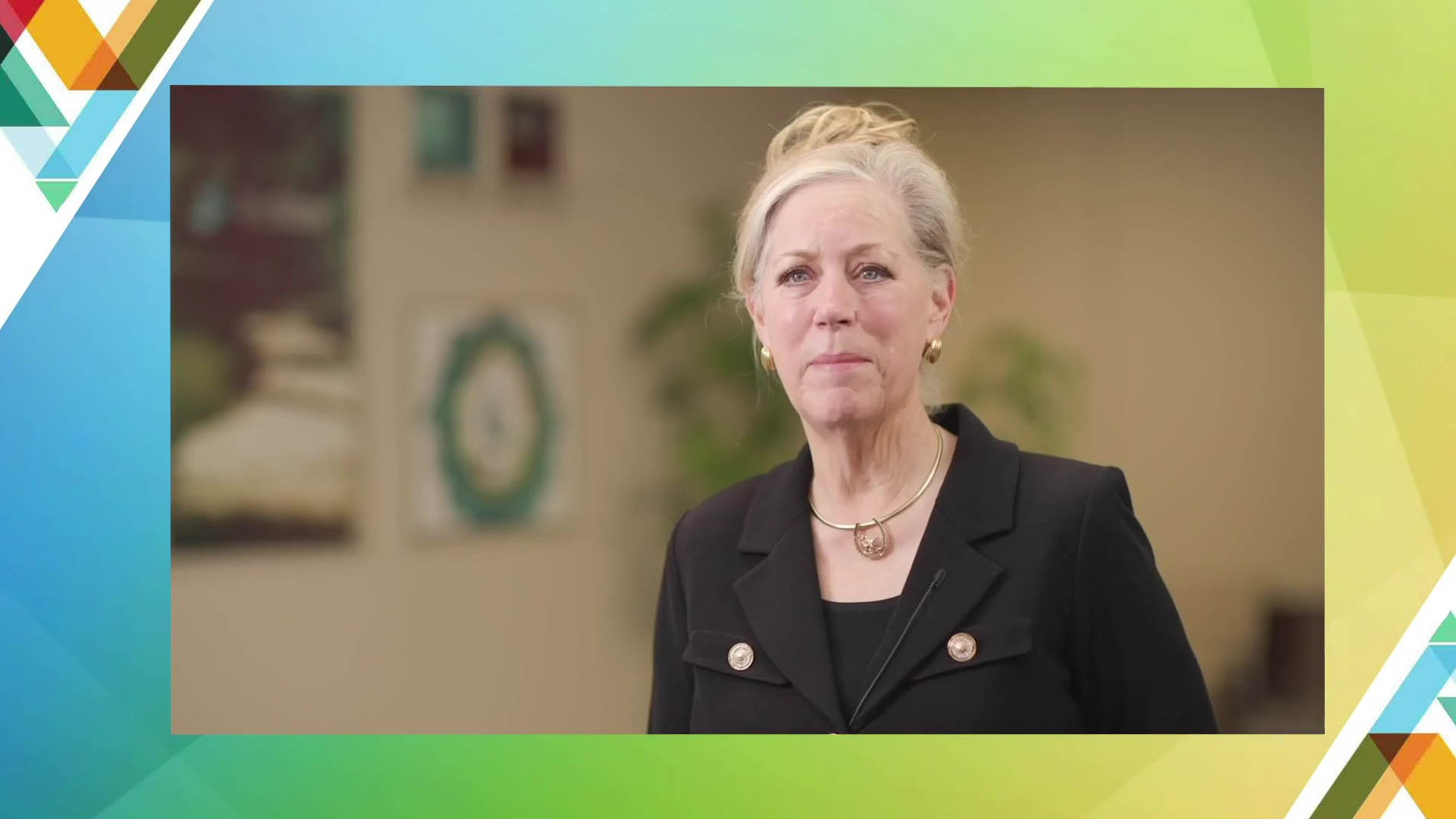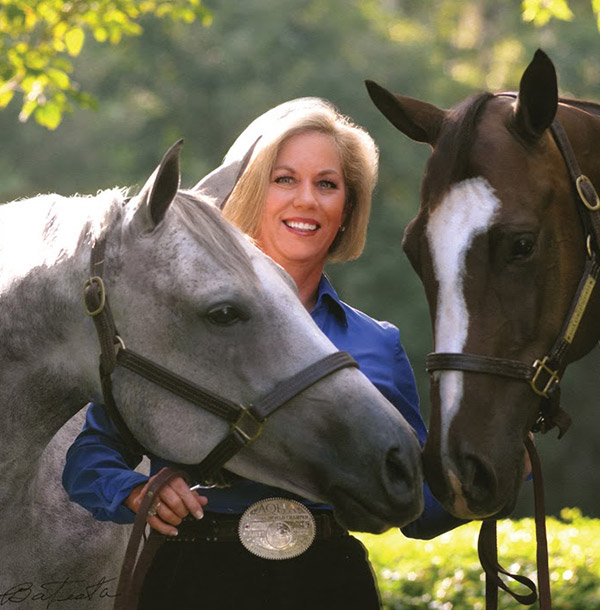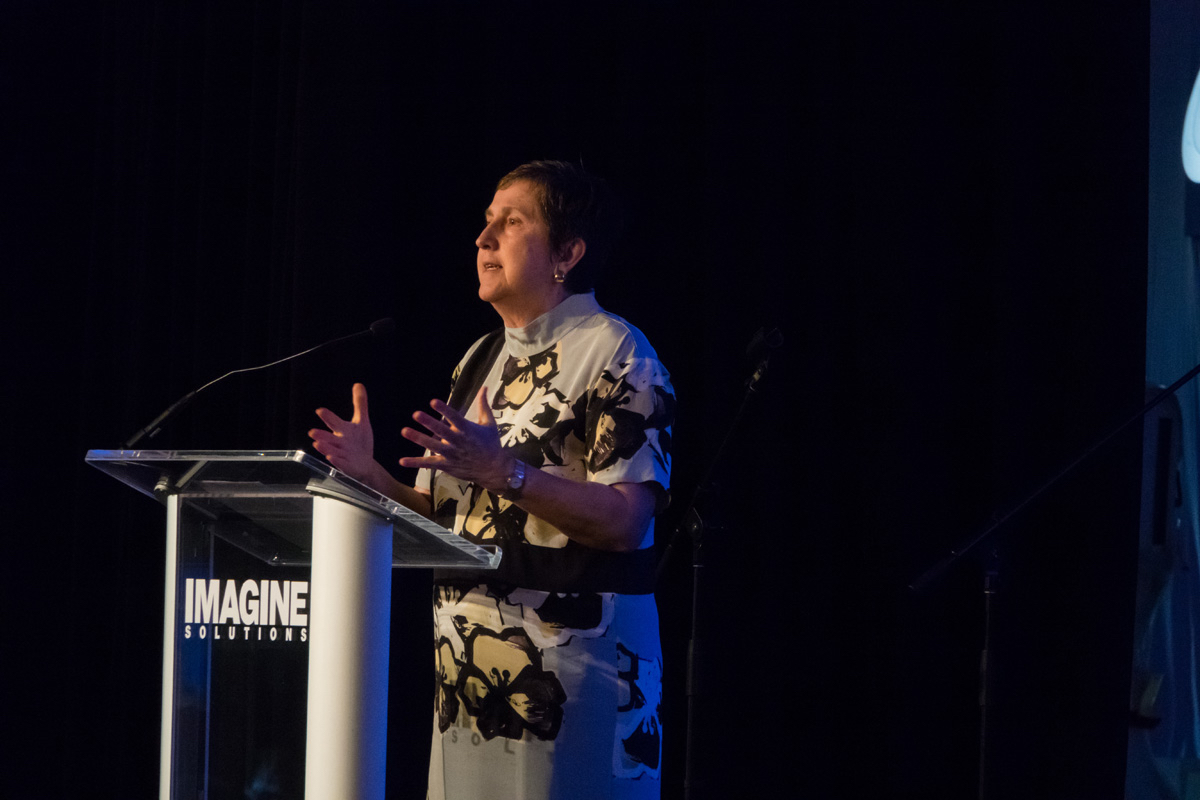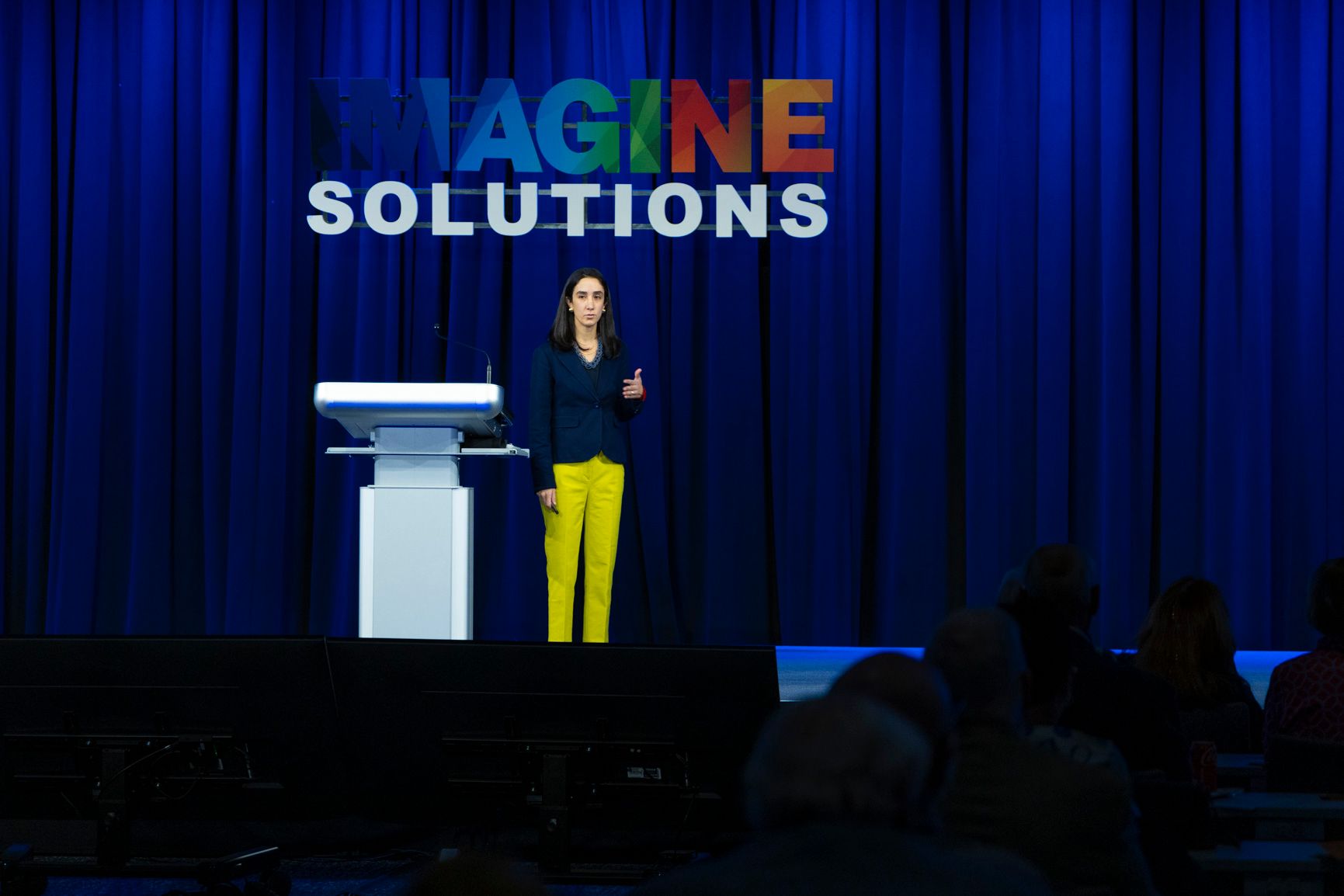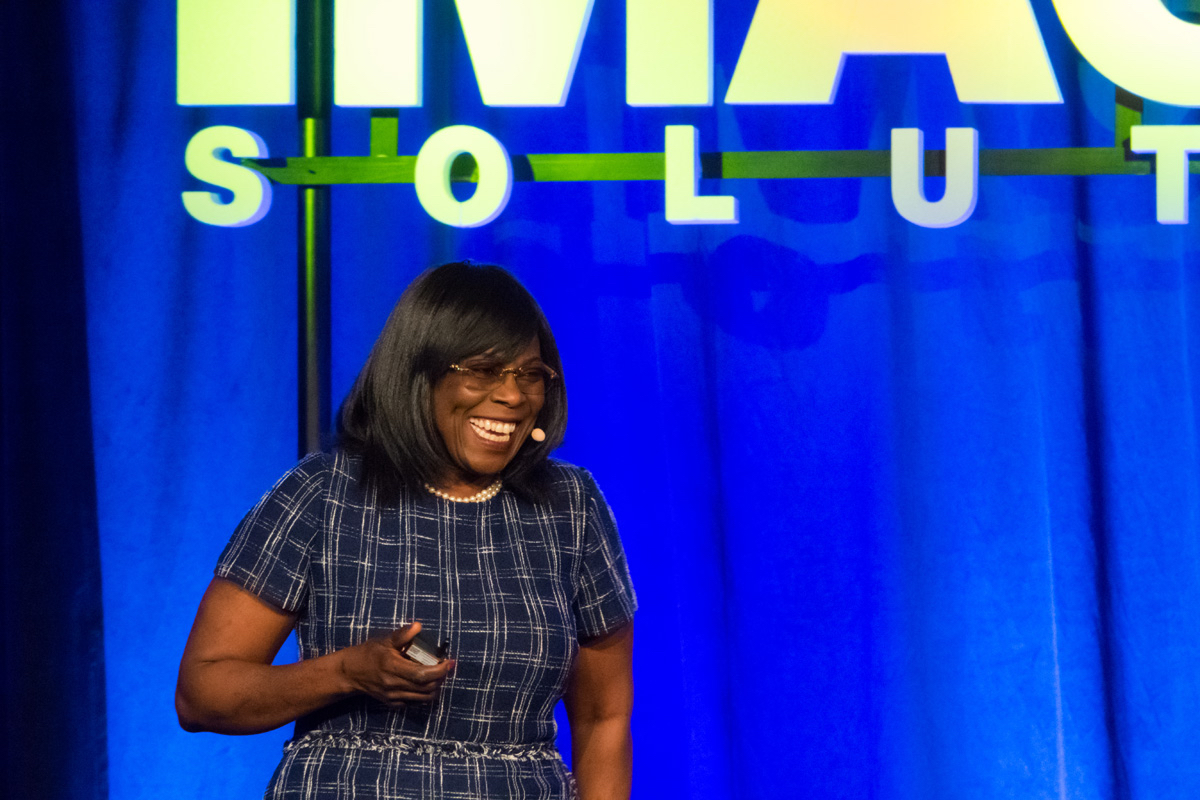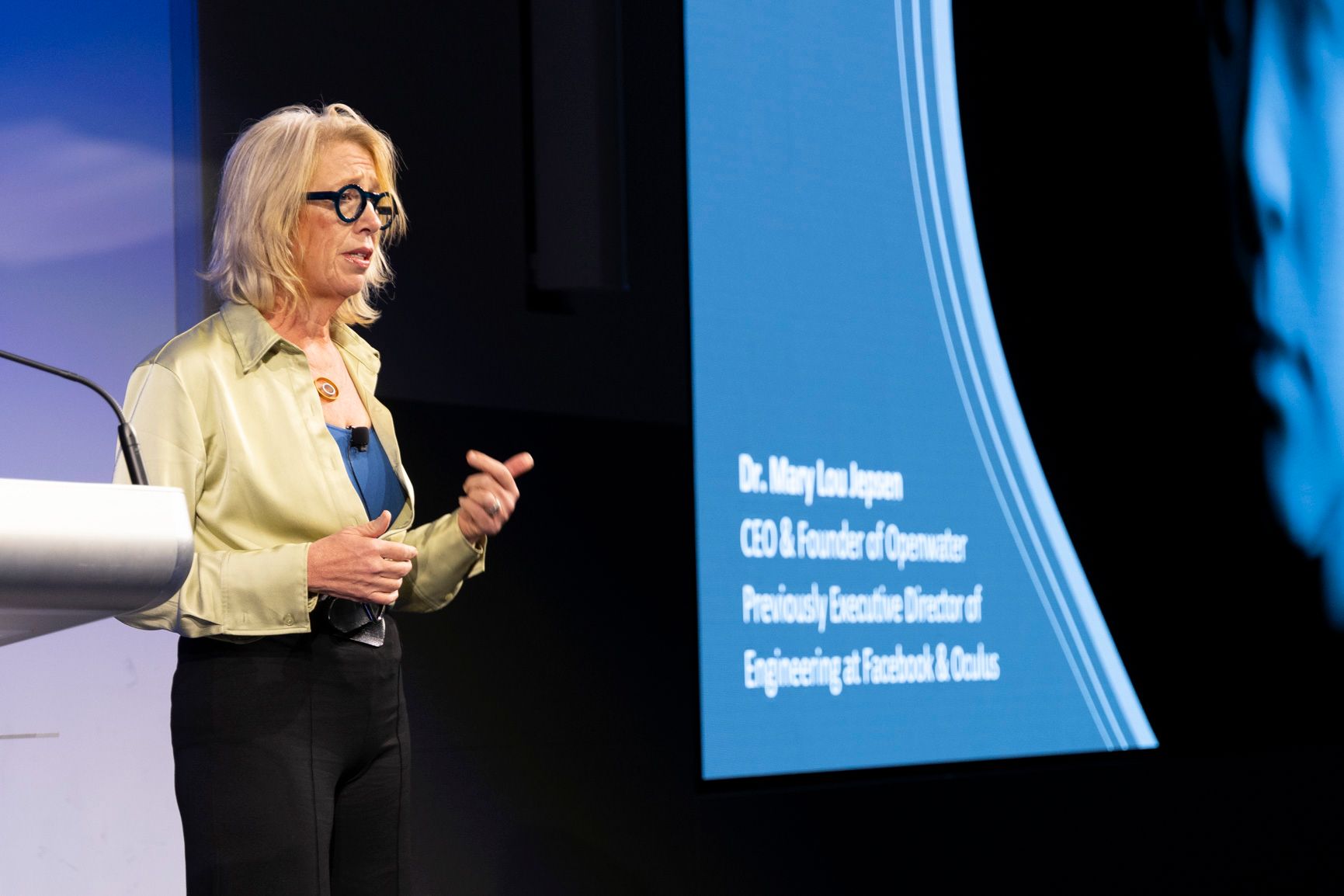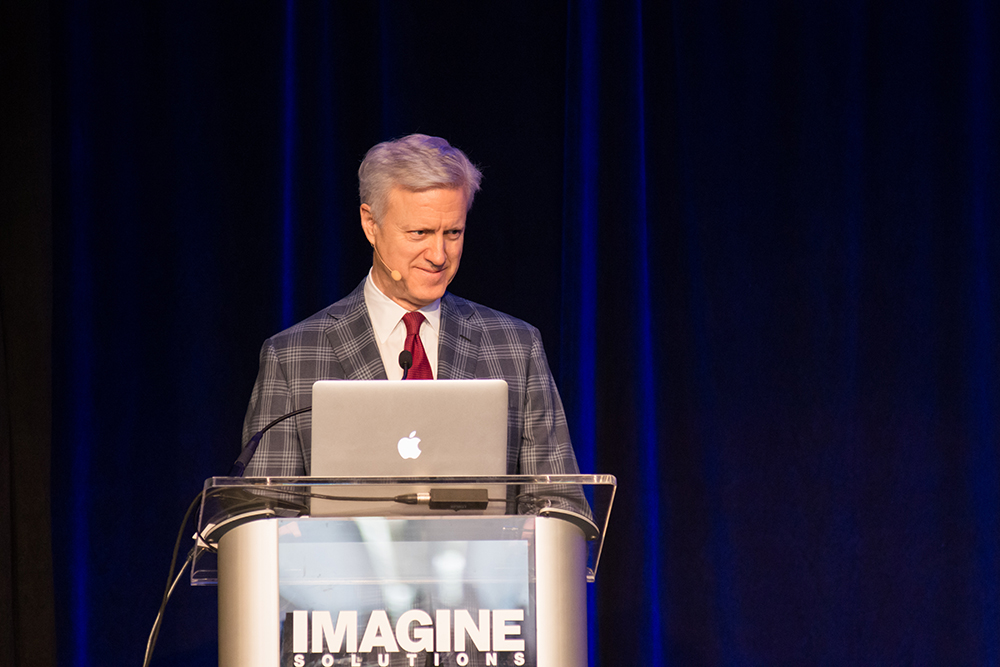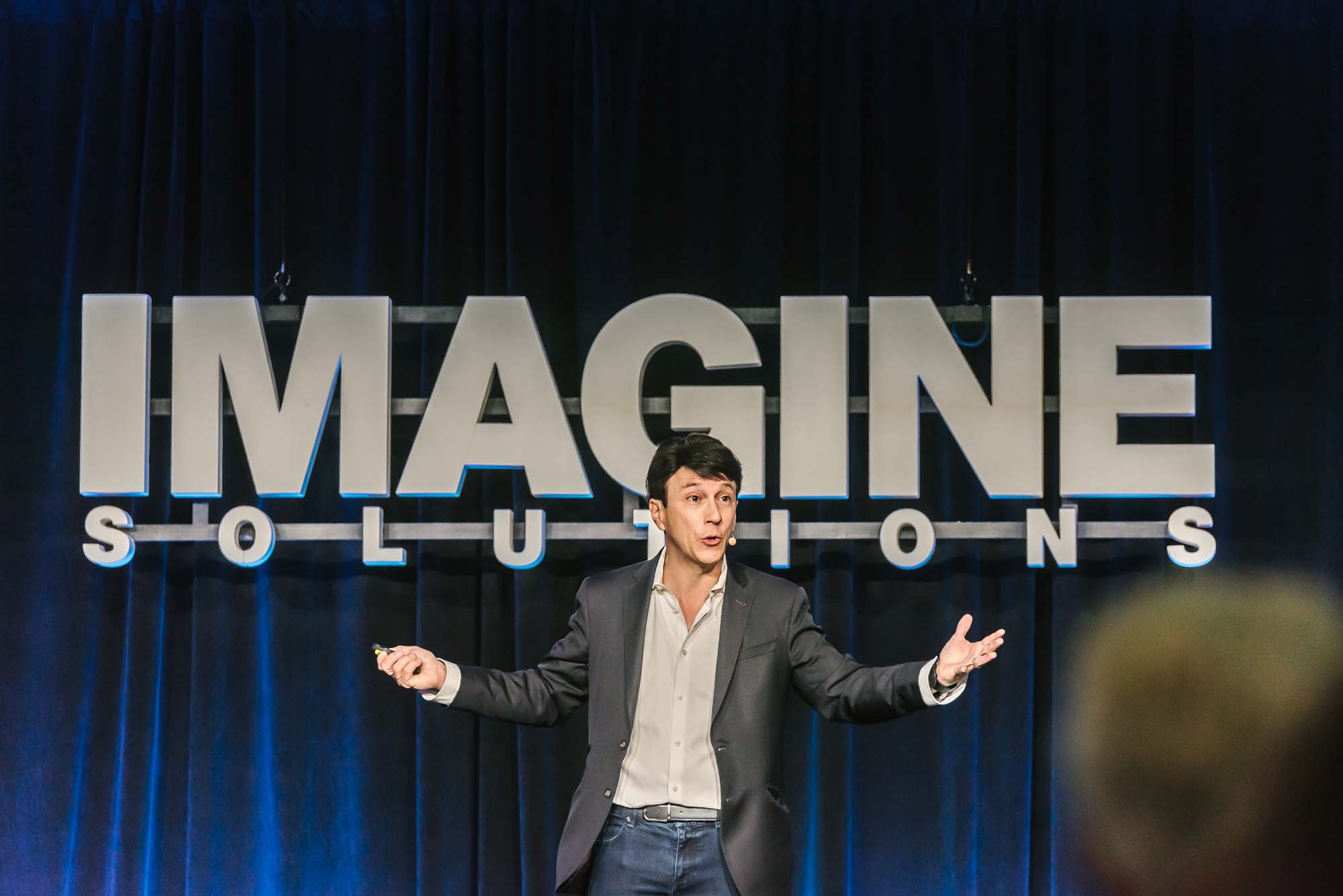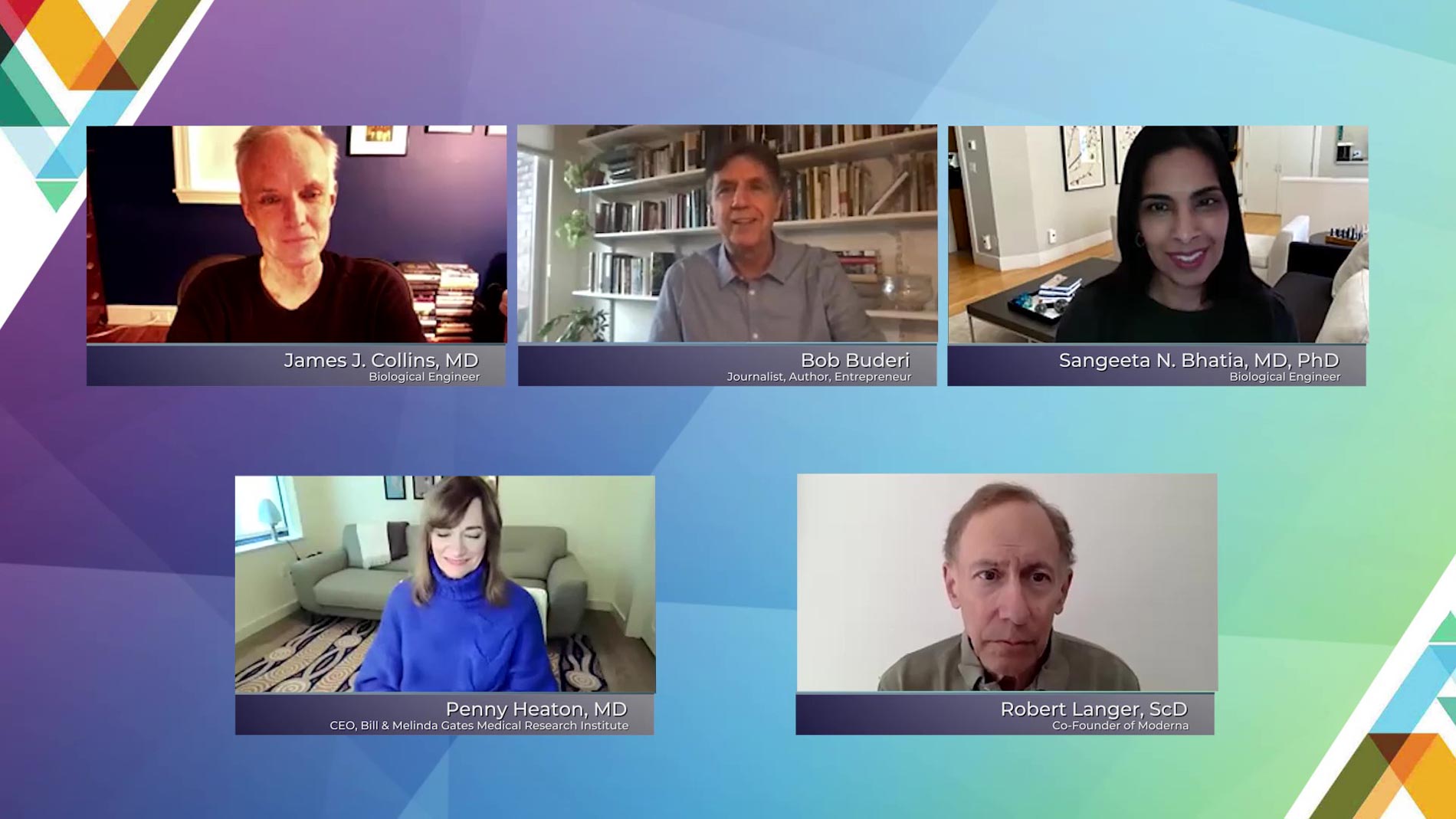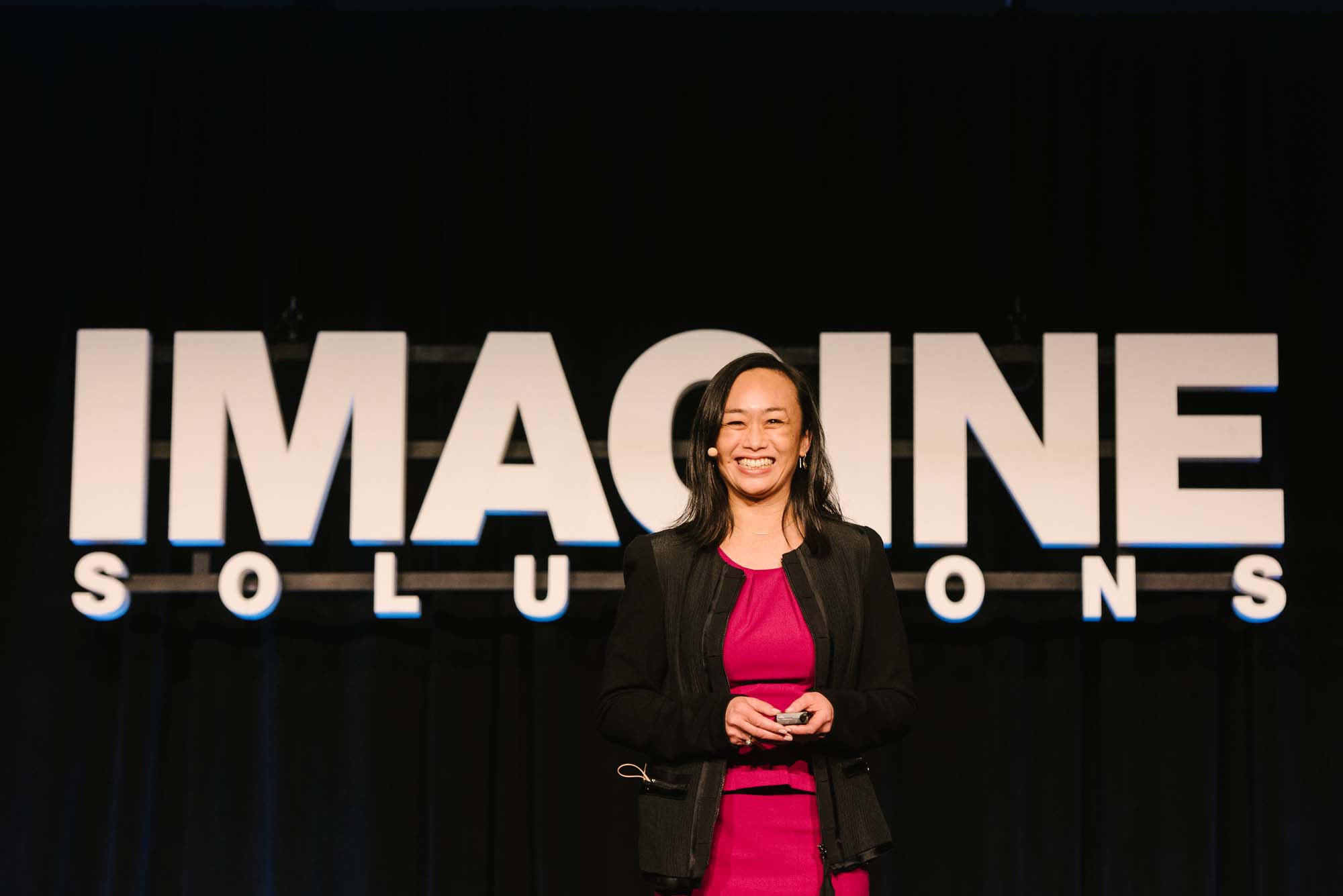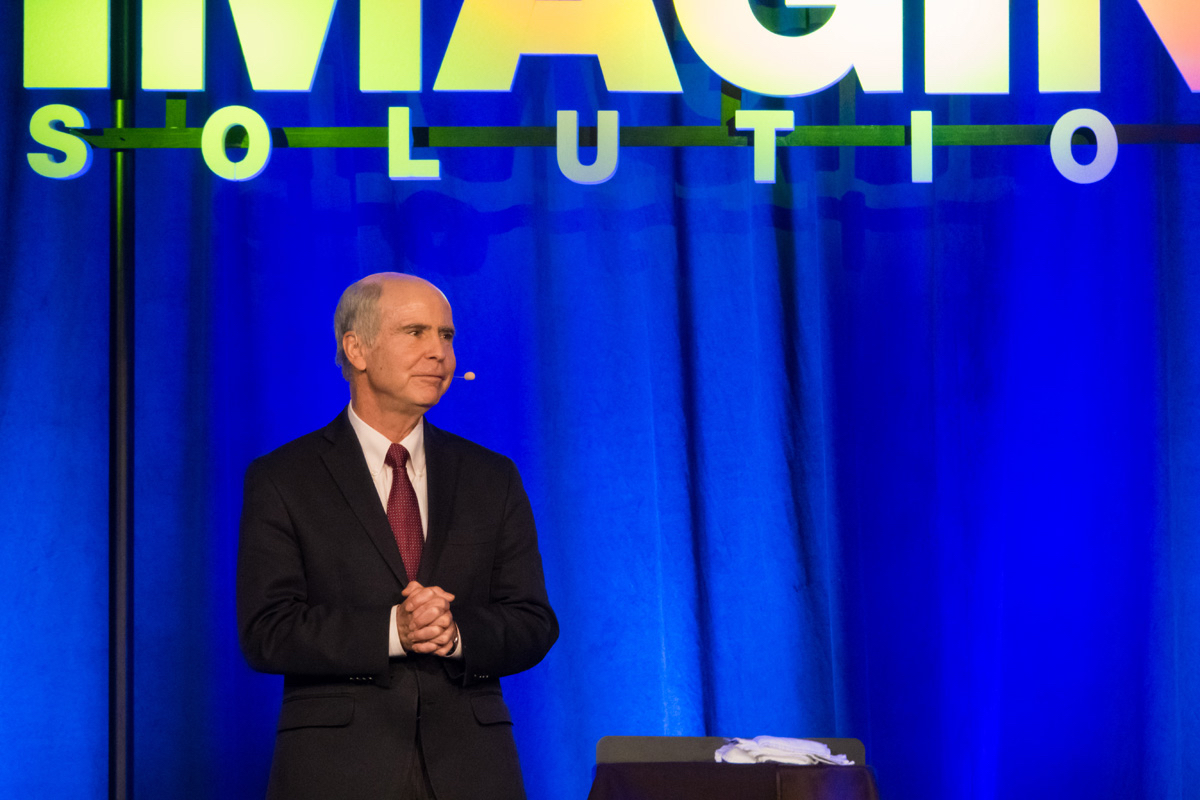Veteranary Medicine
Convergence of frontiers in veterinary and human medicines and the role animals play in our lives
00.00
let's start then with dr eleanor m green formerly dean of the texas a m university college of veterinary medicine and biomedical sciences she's a diplomat at the american college of veterinary internal medicine and the american board of veterinary practitioners she's also led a trio of national veterinary organizations each time becoming the first woman to do so and today she will tell us how the merging of human and animal medical research could lead to amazing advances for anything that walks talks or breathes please welcome dr eleanor green [Music] hello my name is dr eleanor greene and i am the only veterinarian in a long line of physicians and that gives me a perspective to share with you today in the imagine solutions 2021 conference as we try to find solutions for tomorrow the perspective is about the convergence of frontiers in veterinary and human medicine and how
01.01
that can transform your health we hear a lot about health today meditation yoga doctor's visits exercise and when we look at it most of the healthy lifestyle focus is on diet exercise and regular checkups but there's something very important missing and this provides opportunities for us for even greater health and with that there are three components i'd like to share with you one is the role of animals in society and their impact on our health the second is one global health as we share the planet together and the last is mutually advancing health care when we start with the role of animals in society i want to talk about a survey of fifth graders when they were asked what are the most important issues in the world you know what they said they said welfare of animals number one number two was protecting the environment and number three was caring for people now that's an
02.00
interesting priority list isn't it another point is that that was a 2009 survey and those fifth graders are now 22 year olds they're gen z they're entering the workforce they're contributing to society and society is changing and one of the ways that society is changing is in the societal views of animals we used to talk about pet owners and now we say pet parents we used to talk about pets and now they're often referred to as fur kids and millennials are often using pets their animals as starter families and some are even choosing them as their permanent families this is so profound that it's adversely affecting the sale of pampers but don't worry there's a substitute in doggy diapers so the retail market goes on now you might expect this out of a millennial when you start asking them about when they're going to have your grandkids
03.00
another interesting point is that 23 percent of those surveyed said they love their dog more than their significant other now that's 23 percent of you and that does not include those that are undecided 68 percent of you own a pet you're among the 85 million pet owning families and you all spend 109 billion dollars a year on pet expenditures this is big for retail you see articles about pets everywhere this was the southwest magazine and it was the best kind of friend one more reason to love dogs they give us something people can't if you've been watching commercials lately you'll see the majority of them have animals in them and it doesn't have to be about animal products it's about anything because people relate to animals and the people in the marketing industry know that now we know that animals can sell trucks and we know that animals can sell beer but does the human animal relationship really matter
04.02
well there's an organization called habri which is the human animal bond research institute which set out to prove just that they fund research that looks at the effect of animals on people and their health and with this video i want to show you one example of that discover relief from fatigue depression and stress discover dog prescription strength dog is the non-harmful treatment that is shown to lower blood pressure and risk of heart disease prevent allergies in children reduce stress levels decrease anxiety and depression strengthen your immune system and increase social interaction side effects may include talking in ridiculous dog voices picking up poop making funny faces being jealous of your dog kissing other people pretending your dog has a job and has to pay rent excessive social media posts laying on the floor pretending to die to see if your dog comes to help you having full-on discussions with your dog feeling guilty if you don't tell your dog you love them before you leave the
05.00
house saying bless you when your dog sneezes calling your dog by names other than its actual name congratulating your dog's bowel movements discover better health ask your veterinarian about dog [Music] as a result puppies and kittens can be a prescription for depression and can hopefully decrease the use of drugs in today's society human animal interactions decrease depression loneliness and they enhance social support and general well-being in psychiatric inpatients animal assisted therapy resulted in significant increase in interactions with other patients social isolation and loneliness human animal interactions provide bigger connections and they decrease loneliness and depression in 2019 was the first ever summit on social
06.00
isolation and companion animals it was held in dc now that was pre-coveted imagine what that conference would be like now after we've experienced covid and being in our homes with pets depression in residence and nursing homes decreased over the course of two years in elderly residents when there was a resident dog alzheimer's patients they smile more they're less hostile to their caretakers and they're more socially communicative post-traumatic stress disorder animal benefits are many they decrease the signs of ptsd they decrease the signs of depression they increase life satisfaction and they increase psychological well-being and they also increase social activities and decrease social isolation and another point is that it decreases their absenteeism from work they have better lives when they interact with animals the homeless also benefit from animals the animals provide companionship belonging and safety and some have
07.01
questioned whether or not they should have animals as they live in a homeless environment the answer is a resounding yes and they will actually take care of their animals before they take care of themselves animals mean a lot to children and they have a profound emotional response on children and when you see this young boy who is getting his first puppy it's easy to understand how animals and children connect and the positive effect that animals have on children now that's touching and that's a happy little boy on the other hand animals are helpful in decreasing depression and grief in children and teenagers they ease a sense of loneliness and they turn to animals during times of grief i was giving a talk on the human animal bond one time and a teacher had asked their students to draw a picture of what the human animal bond meant and this middle picture was the one that i picked out of the whole class to share with you
08.00
when the world leaves you they never will and that's profound children with autism calmer better communication improve communication and reduce stress from animal contact cancer patients especially pediatric cancer patients with animal assisted therapy there are many positive benefits that you see here and they alleviate psychological distress not only in the children but also in their parents and it facilitates their coping with the cancer that they've been stricken with and it promotes well-being throughout hospitalization and it's not just children with cancers it's also adults with cancer they get a lot of benefit from animal assisted therapy and if you want to add one more benefit animals can be trained to detect cancer and some of them are even more accurate than the routine traditional means that we use in some situations allergies and immunity it's been shown that allergies are decreased when you have contact with young children with animals and teenagers who lived with a cat
09.02
during the first year of life had a 48 lower risk than their peers of allergies this goes on also prenatally and that with prenatal exposure to dogs it can decrease the occurrence of allergies and also the development of atopy the american heart association knows this in fact they have a statement that says that pet ownership improves heart health and pet owners have better heart parameters lower blood pressure than non-pet owners and owning a cat makes one more likely to be alive one year after a heart attack and non-cat owners had a 40 percent greater likelihood of death now that's motivation for having a cat the same is true of hospitalized patients with heart failure a therapy dog improves their heart parameters as well and lowers their anxiety the national institute of health knows this too and they have shown that studies of human health should definitely consider the absence or presence of a pet in a
10.00
home and and the relationship with that pet is a significant and variable in research and they recommend that any study of human health should be considered not comprehensive if the animals with which they share their environment are not included they simply have that great of an impact on our health and so puppies and kittens prescriptions for life now dogs have become family members and we've said that dogs have gone from the barnyard to the house to the bedroom but it's more than that they've actually gone into our beds and over half of dogs and over two-thirds of cats share our beds and it's not just one cat or one dog often it's many when we share these environments it's not limited to the bedroom it also goes throughout the house and even at our dinner tables so wish shared environments becomes shared diseases and it's something we all need to be mindful of we do share diseases when we say that
11.03
how many of you said oh those animals make us sick the truth is the diseases are shared both ways sometimes we do transmit diseases to animals and sometimes they transmit to us but we do share diseases we also share environments and suffer the effects of environmental influences for example you smoke i smoke we smoke and animals get the same effect to secondhand smoke as people do and in veterinary medicine today we are seeing a rise in toxicosis due to marijuana and this is both recreational and medicinal marijuana so those are some of the things that i think are important to underscore the impact on our health of animals and how society views them the next phase that i'd like to go into is global one health as we share a planet together what global health means it's the inextricable link among animal
12.02
human and environmental health and that extends locally to globally so we'll start with a question why do you vaccinate your dog for rabies your first answer might be to protect your dog and that certainly is true but it's so much more than that it's protecting your entire family because rabies is universally fatal in animals and people and zoonotic diseases are those that are shared between people and animals and sixty percent of the known infectious diseases are in fact zoonotic emerging viruses today we know a lot about them today but 75 percent of the new and emerging infectious viral diseases are zoonotic and every four months a new infectious zoonotic disease emerges that originates in animals there's a long list but the two that jump off the page are ebola and coronavirus or sars we certainly have experienced both if we remember back to 2014 when ebola
13.02
entered this country through a mr duncan as he landed in dallas texas with ebola and he was hospitalized and his healthcare worker nina pham has become famous her name is a is a household word because she contracted ebola now she had a dog and when they arrived at her apartment to disinfect the apartment what did they do well i'll tell you what they did in spain when this woman had ebola and they went to her house and she had a dog they summarily killed the dog and she said after she recovered from ebola that the loss of her treasured pet was more traumatic than contracting ebola so they arrive at nina pham's apartment and here is a dog what do they do does this animal transmit does it have ebola too could it just transmit the virus on its hair coat we didn't know at that time so what we did at texas a m we have a veterinary emergency team
14.01
and we sent two of our team members and they stayed in isolation with bentley nina pham's dog for 21 days and during that period of time they tested the dog to see if it was contracting ebola or not and fortunately it did not it was safe we learned something from that experience but nina pham and bentley were reunited afterwards and we learned something about ebola in that process a way that veterinary medicine and animal medicine work together now we do know that ebola has origin in animals and that's the fruit bat we also know that ebola continues to be an international threat for all of us as a result of that again at texas a m we created a global one health initiative and we focused on infectious diseases and especially pandemics and each year we have a global pandemic summit and that ends up in white papers and the topics are very pertinent for example the growing threats
15.00
global leadership and how important it is we've just experienced that community leadership and collaboration we've seen how important that is the most recent summit was looking at pandemics and threats in the 21st century this was november 2019 pre-covered except it really wasn't because kovat was already brewing and how important that is we don't know a lot about the animal origin of of covid we're still suspecting the fruit bat there are other animals that might be involved and we continue to explore and i'm sure we'll get those answers what we do know is that looking at genetic analysis of receptors we can predict the susceptibility of different animals to covid and this chart shows that very well now i want to point out two animals the cat medium and the dog low and yet already we have had dogs and cats contract coveted what we also know is that they got the disease
16.00
from people not the other way around and there's been no evidence of animal to human transmission of covid at this point we also know that a bronx zoo tiger tested positive for covet and just recently early in 2021 the first known cases in non-human primates occurred all these living together mild signs and the source was a member of the wildlife health care team who was asymptomatic but a carrier of covid so global one health includes animals and people and to keep our world healthy we have to consider both and we're very excited because for the very first time in 2018 the national strategy document that was signed by the president addressed humans animals and the environment and again in 2019 biological threats to humans animals agriculture and the environment are among the most serious threats facing the u.s and the international community and in today's interconnected world
17.00
biological incidents have the potential to cost thousands of lives for people and to cause significant anxiety and to disrupt travel and trade we've just experienced that with covid so global one health we share a planet now what are some ways that we can work with human and veterinary medicine to advance health care individually we live in one of the most transformational times in history things are changing so fast and animals and their families have access to technologies in health care once considered just emerging and i won't go through all these because i'm sure you've seen them before in other talks but what i will say is that in the latest talks in medicine the topics that are there in reimagining the future of medicine are also the topics that are relevant in veterinary medicine and as we envision a future of health care we must include animal health care and human health care with interprofessional collaboration to
18.02
keep us all healthy on this shared planet so sometimes in human medicine they make the advances and we take advantage of them in veterinary medicine this actually happens most often there are also times when advances in veterinary medicine will advance human medicine so again if we work together we'll all move ahead more quickly and what we're all after from birth to old age to death is systems health that's measured and quantified continuous and proactive outcome-based transparent client-driven technology-enhanced database integrated and connected one example the healthcare journey begins at birth and with the collection of umbilical stem cells we can bank those stem cells and they can be used throughout a person's or throughout an animal's life to enhance their health a big example is digital health cover of time magazines apple watches can do so much technology review the measured life and
19.00
that's where we are and this is going to get bigger and bigger and bigger and as we embrace the digital health revolution just imagine the possibilities of how we can enhance health digital health means health care measured monitored and connected and we can measure a lot of the health care parameters we can collect them we can analyze them we can use them to drive our decisions and this is the future of health care in animals and people and the customer experience is definitely going to incorporate these technologies how many of you are wearing devices i have three i have three devices right now i could have more and i love them these digital devices are constantly upgraded constantly changing just like your apple watch it's a very competitive space but please know that technology evolves to be faster cheaper and smaller so what's around the corner is even better than what we have today but don't wait this has attracted investors and they've poured over 30
20.01
billion dollars into startups at the intersection of health and technology since 2011 and the same thing is true in the veterinary space with many startups in pets being funded give you another example we at texas a m have an event called aggies invent where we bring students from all around campus in different disciplines engineering students and veterinary students and medical students and whatever they are they all come together and in a small group they surround around one veterinary problem and then they come up with a solution one example i'll share with you is sky paws and this is a monitoring device that collects a lot of the different parameters can be housed on the web can be accessed by the veterinarian and can be used on many species and this was done by students and they now have formed a company which is getting funding it's a veterinary student and an ag business student they came together and created a business out of this aggies invent so here's where we're going with this
21.00
in your car you have a check engine light there are computers and cars that can tell you what's wrong and that's exactly what we're doing in humans and animals so it's on star for the body early detection of disease medical alerts emergency responses integrated data all through digital health this builds on what we already have in gps tracking and activity and fitbits and all the monitoring devices that we already have in the human and pet markets this is one example whistle with gps monitoring tells you where your pet is at all times this is all going to be made better we're going to go from where we are today to a much higher level because of cloud diagnostics cloud dx and this is science fiction becoming reality and allows our health to be connected this is where it can all be uploaded on the cloud and accessible at any time of day 24 7. this is going to be especially important as animals or jet staters because we'll have access to their medical records where worldwide wherever they are
22.00
and even their health papers can be created virtually and be ready because when these pets land they will be housed in pet friendly settings around the world it's not just pets these cows are all wearing monitoring devices and with these monitoring vices many decisions can be made about their health one outstanding feature is that three days before a cow could be detected as being ill three days before that by traditional means these monitoring devices can tell that the cow is going to get sick or is in the early phases of illness this provides great care so they can have happy healthy cows with these monitoring devices and the same thing's true with horses so animal health care then again can be connected it can all be team based and all these data can come together to keep our animals healthy to drive decisions and can even drive us to a veterinary clinic when we need to go or drive us to veterinary care because it's expected that over half
23.01
of those calls to the veterinarian are going to be virtual and that leads us to the next subject virtual care or telemedicine this is really advancing in human medicine and is taken off tremendously in covid some people were a little reluctant and now that covet has forced people in they're more comfortable with it and this is a wonderful way to advance care in people but virtual care or telemedicine they're kind of interchangeable is the natural evolution of health care in a digital world so we're now using veterinary virtual care or telemedicine animals as well for many different purposes that are seen on this slide and this is going to do nothing but grow it's also advanced because of covid faster than it would have otherwise one of the positive features of virtual care in veterinary medicine and in human medicine is that you can connect specialists in every single veterinary specialty throughout the world so you can put
24.00
all the experts in one room together taking care of your animal these devices can also help us connect in real time with pet parents as health care events are occurring for example an animal that's hospitalized the animal's out of anesthesia now he's doing well he's in icu all those things can update the pet parent on a minute-by-minute basis we at texas a m hired dr laurie teller who was the first telemedicine veterinarian in academia in the world i believe and we did this because we think this is important for pet health care and for the veterinary profession so we really felt that it was important that students are exposed so that when they graduate and deploy throughout the country that they will take these abilities with them and can advance virtual care widely many businesses are jumping in this the telehealth providers are growing in leaps and bounds some of these devices do more than just
25.00
telemedicine you can make appointments and you can talk to your doctor and you can manage all parts of vaccinations all parts of your animal's health care can be managed for these devices here's another component that we really should underscore because we can reach the underserved with telemedicine for example this woman has a cat and she may not be able to ever get that cat to the veterinarian and she relies on others to do that and now we can bring the doctor to her home through telemedicine the same is true in rural communities where sometimes it's hard to attract a veterinarian as it is to attract a physician and so we can take veterinary care to rural communities as well what an asset that is to help serve the underserved a group of us got together and formed a veterinary virtual care association that's similar to the american telemedicine association and we did that to advance virtual care and to help the veterinarians be able to use this new technique more quickly more effectively and more efficiently so
26.01
the future holds veterinary virtual care veterinary telemedicine is going to grow in leaps and bounds and is growing in leaps and bounds just like in human medicine now some worry about if this is too impersonal the iphone will see you now but the reality is that when technologies are used well care is even more personalized and we have a lot of feedback from clients who have used telemedicine and use these digital technologies who tell us that care is better and they feel attended to even more personally than they did before so we're not going to replace doctors we're not going to replace veterinarians we're going to give them broader reach and more skills and more abilities other things that are happening is alexa dr alexa health this is happening in human and animal medicine alexa manage my medication fill my prescriptions this is going gangbusters as well changing gears a little bit healthcare for animals rivals that for people at texas a
27.02
m we have a diagnostic imaging and cancer treatment center that rivals the likes centers in human medicine so we're able to treat cancer we're able to do advanced imaging and interestingly and one thing that makes this profession so much fun is that we can image anything that can go through the bore of these imagers or the bore of a tomotherapy unit we can treat anything we can image anything if we can fit it in the bore another way that we can really help human medicine is that the mri machines on the human side are calculated for adults not for children so we can create the sequences with a small animal like a dachshund that can be translated immediately to a pediatric patient and we are sharing those with human hospitals now we think about functional mris in people and how prevalent they're becoming and yet an animal has to be anesthetized in order to go through an mri and so functional mri has been beyond our scope there's a researcher that has now trained dogs to sit very very very still
28.01
throughout an mri imaging sequence and then she can also put different images in front of the dog to see how the brain responds so we're going to learn more and more about the brain function of the dog just as we are in humans now there was a company that came out and it was called more than a wolf and their hypothesis was that they could communicate with dogs and we could tell more of what they were thinking and saying they were ahead of their time in 2013 so a cautionary tale is all these new things that come out don't work on day one but maybe one day that will be true and can the same thing happen in veterinary medicine that is now happening in human medicine with the brain computer interface i would say so and if you remember a lot of the news has talked about these wearable exoskeletons and how the brain interface has allowed this gentleman to move all four paralyzed extremities and we have a lot of examples in veterinary medicine where this could be useful as well so this is a way that we
29.00
are going to benefit from advances in human health care on the animal side there is a way that humans are going to benefit from advances on the veterinary side because we can treat dogs with drugs that are not yet approved for use in people promising drugs they're safe and so people can have access to cancer treatments that they can't get themselves in the united states because they haven't gone through all of what needs to be approved by the fda and so we have clinical trials and animals and this is sadie watson a dog that had a glioblastoma and we collaborate at texas a m with md anderson and we provide these promising drugs to these dogs and then we track the benefit and what this will do is fast pace these good drugs so they can be used in people much more quickly than they would otherwise great examples of veterinary medicine and human medicine working together here's another one we have a dog aging project at texas a m we all know
30.00
that dogs don't live as long as people so we can study the aging process in dogs and we can actually come to an end point in a reasonable length of time whereas it's not the case in people more to come on this project and hopefully this will help us all live longer genomics is another area that we're all benefiting from and there's a lot out there about genomic testing for predisposition disease and do we want to know our future but there are tests in dogs that can certainly say is this the right animal they can verify the who the dog is and they can talk about family history of disease and can predict diseases for the future so genetic testing is also growing in veterinary field this was a product that appeared on shark tank and this is like 23andme for animals and it's called base paws and she did get funding and this company is doing well another piece of genomics is crispr crispr allows gene editing
31.03
to reprogram biology away from diseases in the aging process in other words we can find a genetic disease we can find which genes cause the disease and then we can reprogram it so that you don't have that disease anymore and that's called precision medicine and there's a tremendous future for that as we see a large number of genetic diseases in people and animals here's one example duchaine's muscular dystrophy is another example this is a genetic disease that affects primarily boys and they universally die before they reach their 20s or in their early 20s what we also know is that this disease affects golden retrievers and by studying golden retrievers we have located the genetics of this disease and we have actually done crispr on this disease and we have a promising drug that is now in clinical trials in people imagine all the different parents who
32.00
have lost a child or all the different people who have lost a friend from this devastating disease that now because veterinarians and human physicians are working together we will find a cure just some smatterings of examples robotics are being advanced in human medicine they're also being advanced in veterinary medicine and robotic surgery is certainly occurring in veterinary medicine as well and there are other ways that robotics can be used not only to help in access to electronic records in hospitals but in inventory control and there are just many ways that robotics can help us be more efficient and more effective uber is getting into everything and now health is well but they're not stopping at human health they also have uber pets so imagine if you're unable to get your pet to the veterinary hospital that uber pets could help you get that animal there all right i want to end with 3d printing 3d printing in healthcare this could again could be in a talk all to itself but i want to give you an example of 3d printing in veterinary medicine this is andrea
33.01
stryker and she has a dog named werner it's a two-year-old dog and she loves this dog and one day she noticed that he was showing neurologic signs and so she took him to her veterinarian and he found this bone tumor of the skull he didn't know what to do he thought the dog should probably be euthanized because it was already affecting the brain and she would not quit and she brought werner to texas a m university and we didn't know what to do at first and we studied this dog she said do anything you possibly can and so we 3d printed werner's skull so that when his skull was removed along with that tumor we were able to replace it with his 3d printed skull that was formed just to fit him here he is two years after surgery she is so happy she calls him wernher the wonder dog she loves texas a m so much she has his ears colored maroon which is our school colors and she takes him around in animal assisted therapy to help other people who had
34.00
terrible challenges in their health and werner makes them happier another example of what we can do together so animals and their families again have access to many technologies and these technologies are going to continue to get bigger and better and we can work together to make them occur more quickly so veterinary health care has never been better in fact the reason for this is because of the societal view of animals and people care about their animals just like their family members and they expect the best and they will support the best and as a result animal health care rivals human health care in the next decades human and veterinary health care will be barely recognizable because we're changing so fast and so when we review what we've been talking about and start looking toward the solutions for these opportunities not problems but opportunities we know that animals are changing in society people look at them differently society views animals
35.00
differently and they impact our health and we know it and so we need to be cognizant of that global one health helps us understand how we all share the planet together and we must be mindful of animal human and environmental health for all of us to be healthy and that we need to work together to advance veterinary and human health care so what's missing what's missing beyond diet exercise and regular visits animals you'll be healthier with animals so the big idea is the role of animals in our lives and our health and the solution is for us all to work together for human and veterinary medicine to work together even more in interprofessional collaboration

